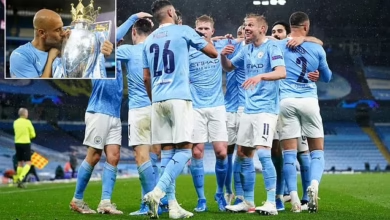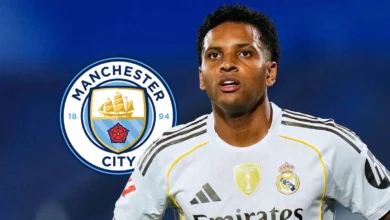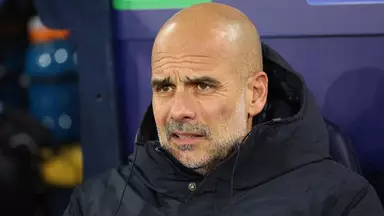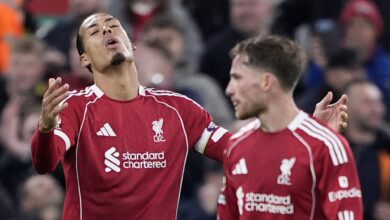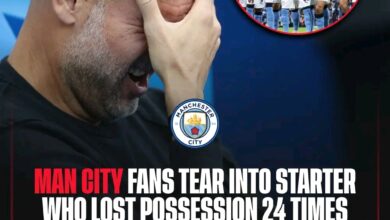Patrice Evra blames Pep Guardiola for ‘killing’ football
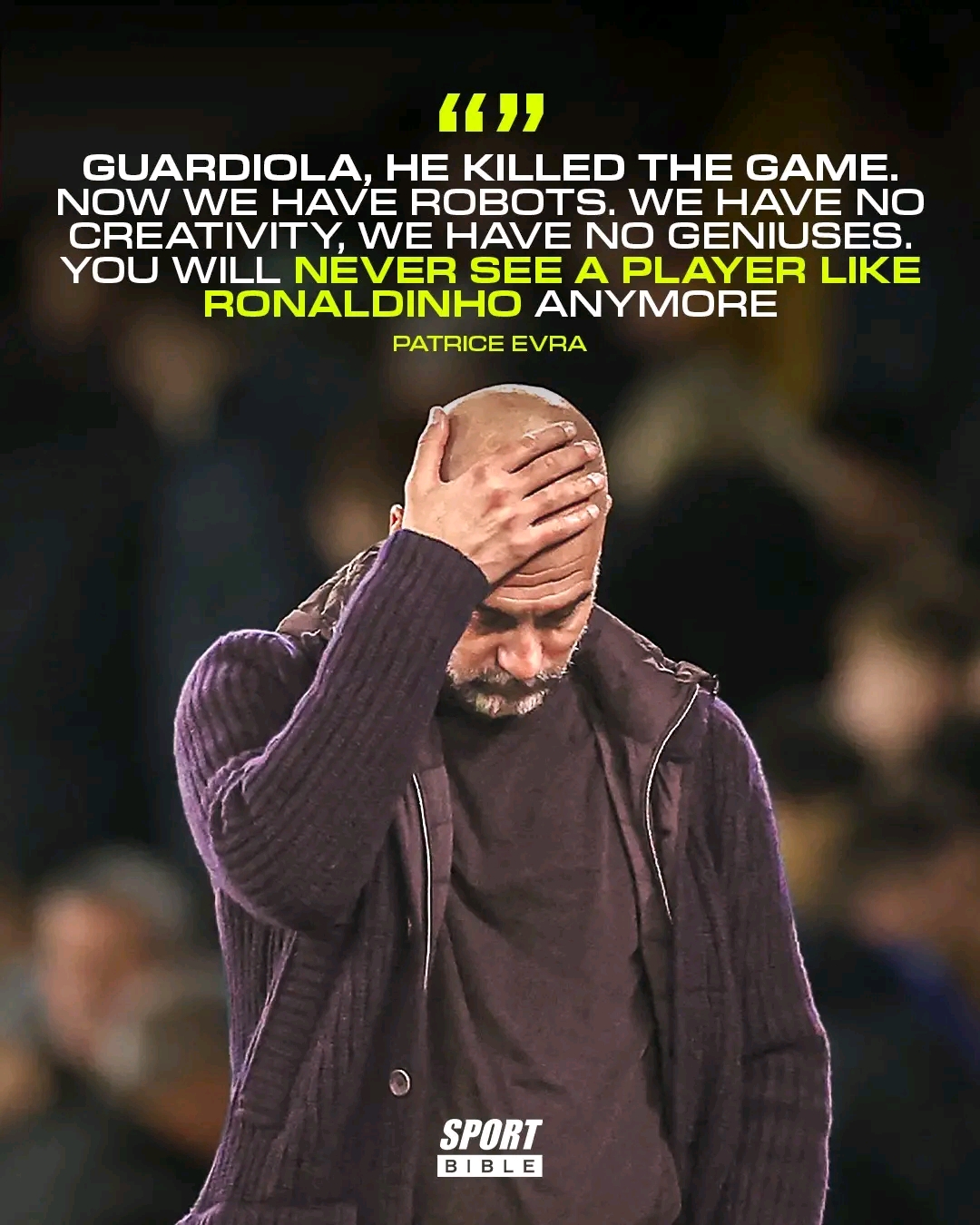
In the ever-evolving landscape of modern football, few debates have sparked as much passionate discussion as the recent controversy ignited by former Manchester United defender Patrice Evra. During an appearance on Rio Ferdinand’s podcast, Evra delivered a scathing critique of Manchester City manager Pep Guardiola, stating: “I think Guardiola is one of the best managers. But Guardiola, he killed the game.” This bold declaration has sent shockwaves through the football community, forcing fans, pundits, and professionals alike to confront fundamental questions about the direction of the beautiful game.
Evra’s inflammatory statement went further: “Pep Guardiola killed football! Now we have robots. We have no creativity, we have no geniuses. You will never see a player like Ronaldinho anymore.” These words, coming from a player who graced the highest levels of European football for over a decade, represent more than just personal opinion—they embody a growing sentiment among football purists who fear that the sport they love has become mechanized, sterile, and devoid of the spontaneous magic that once defined it.
The timing of Evra’s comments is particularly significant, coming in the wake of discussions about modern football’s tactical evolution and the increasing emphasis on systematic play over individual brilliance. This critique opens a fascinating window into the philosophical divide that currently exists within football culture, where tactical sophistication battles against romantic idealism for the sport’s very identity.
To understand the weight of Evra’s accusations, one must first appreciate the seismic impact Pep Guardiola has had on modern football. Since his emergence as Barcelona’s head coach in 2008, Guardiola has fundamentally altered how the game is played, coached, and conceptualized at every level. His possession-based philosophy, rooted in the principles of Johan Cruyff’s total football but refined through modern tactical analysis, has become the blueprint that countless teams worldwide attempt to emulate.
Guardiola’s approach centers on maintaining possession through intricate passing networks, pressing high up the pitch to win the ball back quickly, and creating overloads in specific areas of the field through positional play. This methodology has yielded unprecedented success: multiple Champions League titles, domestic league victories across Spain, Germany, and England, and a style of play so distinctive that it has been dubbed “Guardiolaball.”
The Catalan coach’s influence extends far beyond his own teams. Youth academies worldwide have restructured their training programs to emphasize technical skills and tactical understanding from an early age. Coaching courses now dedicate entire modules to positional play concepts that Guardiola popularized. Even amateur teams attempt to implement passing patterns and pressing triggers inspired by his methods.
However, this widespread adoption of Guardiola’s principles has created what critics like Evra see as a homogenization of football. Where once teams displayed vastly different styles and approaches, many now seem to follow similar patterns of play. The diversity that characterized football in previous eras—from the direct, physical approach of traditional English football to the flair and improvisation of South American styles—appears to be diminishing as teams converge on Guardiola’s template
Central to Evra’s critique is the notion that modern football has become overly systematic, reducing players to mere cogs in a tactical machine rather than allowing them to express their individual creativity. This “robotization” argument suggests that the emphasis on following predetermined patterns of play has stifled the spontaneous moments of brilliance that historically defined football’s greatest entertainers.
The comparison to Ronaldinho is particularly poignant. The Brazilian magician represented everything that seems absent from today’s game: unpredictability, audacity, and the ability to create something extraordinary from nothing. Ronaldinho’s career coincided with an era when individual expression was not just tolerated but celebrated, when managers gave their most creative players the freedom to roam and improvise without the constraints of rigid positional responsibilities.
In contrast, today’s players operate within increasingly structured systems where every movement is choreographed, every pass predetermined, and every decision made within the context of collective patterns. While this approach has undoubtedly raised the overall technical and tactical level of the game, critics argue it has come at the cost of individual artistry and unpredictability.
The modern emphasis on data analytics further reinforces this trend. Players are evaluated not just on their ability to entertain or create moments of magic, but on their adherence to tactical instructions, their pass completion rates, and their contribution to collective metrics. This data-driven approach, while improving efficiency and reducing errors, may inadvertently discourage the risk-taking that produces football’s most memorable moments.
Young players entering professional football today are often molded from an early age to fit specific tactical roles rather than being encouraged to develop their unique strengths and creative instincts. Academy systems worldwide prioritize technical perfection and tactical discipline over individual expression, potentially producing generations of technically proficient but creatively limited players.
While Evra’s critique resonates with many football romantics, it faces significant opposition from those who view Guardiola’s influence as evolutionary rather than destructive. Proponents of modern tactical football argue that the game has not been “killed” but rather elevated to new levels of sophistication and collective beauty.
From this perspective, the criticism of “robotization” reflects a misunderstanding of modern football’s complexity. Rather than reducing players to mindless automatons, contemporary tactical systems require higher levels of intelligence, adaptability, and decision-making than ever before. Players must process information constantly, recognize patterns, and make split-second decisions within ever-changing tactical contexts.
The argument that creativity has disappeared from modern football can be challenged by pointing to players like Kevin De Bruyne, Bernardo Silva, or Phil Foden—all products of Guardiola’s system who consistently produce moments of individual brilliance. These players demonstrate that creativity has not been eliminated but rather channeled more effectively within collective frameworks.
Furthermore, the tactical evolution of football has arguably made the game more competitive and unpredictable at the highest levels. The gap between traditionally strong and weak teams has narrowed as tactical knowledge spreads globally, leading to more competitive leagues and international tournaments. The supposed predictability of modern football is contradicted by the increasing frequency of upsets and the volatility of results even among elite teams.
The aesthetic argument also merits consideration. While some may prefer the individual artistry of players like Ronaldinho, others find beauty in the collective choreography of modern team play. The intricate passing movements, synchronized pressing, and positional rotations of contemporary football represent a different but equally valid form of sporting artistry.
Evra’s critique reflects a broader cultural and generational divide within football. Players and fans who experienced football in earlier eras often maintain romantic attachments to the styles and stars of their time, viewing contemporary developments through nostalgic lenses that may not accurately reflect historical reality.
The supposed “golden age” of football creativity is itself a contested concept. Every generation tends to view the football of their youth as superior to what follows, creating a perpetual cycle of decline narratives. Similar criticisms were leveled against previous tactical innovations, from the introduction of sophisticated zonal marking systems to the widespread adoption of the offside trap.
Moreover, the globalization of football has fundamentally altered the context in which the game operates. The financial pressures of modern football, the 24/7 media scrutiny, and the international nature of player recruitment create environments very different from those in which previous generations of stars emerged. The expectation that modern players should replicate the playing styles of past eras may be unrealistic given these changed circumstances.
The development of football infrastructure worldwide has also democratized access to high-level coaching and tactical education. Countries and regions that previously relied on raw talent and individual brilliance now have access to sophisticated training methods and tactical knowledge. This global elevation of standards may reduce the relative impact of individual genius while raising the overall quality of play.
The context of Evra’s criticism cannot be divorced from his history as a Manchester United player and the institutional rivalry between United and Manchester City. The former Premier League star had previously stated that he is happy not to have been managed by Guardiola, suggesting a personal dimension to his critique that extends beyond pure football philosophy.
Manchester United, under Sir Alex Ferguson during Evra’s tenure, represented a different football philosophy that emphasized individual brilliance within collective frameworks, direct attacking play, and the cultivation of match-winning personalities. The contrast with Guardiola’s methodical, possession-based approach could not be starker, and Evra’s criticism may reflect loyalty to the values and methods that brought him personal and professional success.
The competitive dynamics between Manchester’s two clubs add another layer of interpretation to Evra’s comments. As Manchester City has achieved unprecedented success under Guardiola’s guidance, including multiple Premier League titles and domestic cup victories, rival fans and former players may naturally seek to diminish these achievements by attacking the methods used to secure them.
This institutional perspective is neither inherently right nor wrong, but it does provide important context for understanding why Evra’s critique has emerged and why it resonates with certain segments of the football community. The tribalism inherent in football culture often shapes tactical and philosophical debates as much as objective analysis.
Evra’s analysis came during discussions of Manchester City’s defeat to Sporting CP in the Champions League, where he complained that the global trend is to copy the style of touch and possession that has been so successful for Guardiola throughout his career. This observation points to legitimate concerns about tactical convergence and its long-term implications for football’s diversity and entertainment value.
If Evra’s criticism proves prescient, football may indeed be heading toward a future where tactical homogeneity reduces the sport’s appeal and distinctiveness. The financial incentives for success create powerful pressures for coaches and clubs to adopt proven methods rather than experiment with alternative approaches. This could lead to a gradual erosion of football’s cultural diversity and stylistic variety.
However, the history of football suggests that tactical evolution is cyclical rather than linear. Dominant systems eventually face effective counter-measures, forcing continuous adaptation and innovation. The current emphasis on possession-based football may itself be challenged by emerging tactical trends that emphasize different qualities and approaches.
The concern about youth development is particularly significant. If academies worldwide continue to prioritize tactical conformity over individual expression, future generations of players may indeed lack the creative spontaneity that characterized previous eras. This could represent a genuine loss for football culture and entertainment value.
The modern game’s relationship with technology and data analytics adds another dimension to the debate initiated by Evra’s comments. The quantification of football performance through advanced metrics has undoubtedly improved tactical understanding and player development, but it may also contribute to the mechanization that critics perceive.
When every pass, run, and decision can be measured and analyzed, the temptation to optimize for statistical efficiency rather than aesthetic or emotional impact becomes overwhelming. Players and coaches operate in environments where data-driven decision-making often takes precedence over intuitive or creative choices.
This analytical approach has benefits, including more effective player recruitment, improved injury prevention, and enhanced tactical preparation. However, it may also discourage the risk-taking and experimentation that produce football’s most memorable moments. The pressure to maintain high pass completion rates, for example, might prevent players from attempting the ambitious through-balls that could unlock defenses but carry higher failure risks.
The challenge for modern football lies in balancing analytical rigor with creative freedom, ensuring that technological advances enhance rather than constrain the human elements that make the sport compelling. The most successful integration of data and creativity may come from coaches and clubs that use analytics to identify opportunities for individual expression rather than to eliminate them.
The commercialization of football adds economic pressure to the philosophical debate about playing styles. In an environment where financial rewards for success have reached unprecedented levels, the incentive to adopt proven methods rather than pursue entertaining but risky approaches becomes irresistible.
Guardiola’s methods have demonstrated clear commercial value through their success in elite competitions. Clubs investing hundreds of millions in player acquisitions cannot afford to prioritize entertainment over results, particularly given the financial consequences of failure in competitions like the Champions League.
This economic reality may explain the widespread adoption of similar tactical approaches across different leagues and levels of football. The financial penalties for tactical experimentation can be severe, while the rewards for successful imitation are substantial. This creates a feedback loop that reinforces tactical convergence and discourages innovation.
The tension between entertainment and success is not new in football, but the scale of modern financial incentives has amplified its impact. Resolving this tension may require structural changes to competition formats, revenue distribution, or regulatory frameworks rather than simply appealing to coaches and clubs to prioritize entertainment over success.
Patrice Evra’s provocative criticism of Pep Guardiola opens a window into fundamental questions about football’s identity and future direction. While his claim that Guardiola has “killed” football may be hyperbolic, it reflects genuine concerns about the sport’s evolution and the potential loss of qualities that historically defined its appeal.
The debate between tactical sophistication and individual creativity is unlikely to be resolved definitively, as it reflects different values and priorities within football culture. Those who prioritize collective achievement and tactical excellence will continue to celebrate Guardiola’s contributions, while those who value individual expression and unpredictability will maintain their concerns about modern football’s direction.
Perhaps the most constructive outcome of this debate would be recognition that football is large enough to accommodate multiple philosophies and approaches. The sport’s global reach and diverse cultural contexts should provide space for both tactical innovation and individual artistry, both collective choreography and spontaneous creativity.
The challenge for football’s stakeholders—from coaches and players to administrators and fans—is to ensure that the pursuit of tactical perfection does not come at the expense of the human elements that make football compelling. This may require conscious efforts to protect space for individual expression, to celebrate risk-taking alongside efficiency, and to maintain the cultural diversity that has historically enriched the sport.
Ultimately, Evra’s critique serves as a valuable reminder that football’s evolution should be evaluated not just in terms of tactical sophistication or competitive success, but also in terms of its ability to inspire, entertain, and provide space for the unexpected moments of magic that transform sport into art. Whether Guardiola has “killed” football or simply transformed it may depend as much on how future generations respond to his innovations as on the innovations themselves.
The beautiful game’s beauty has always been contested and redefined by each generation. The current debate between tactical evolution and creative expression represents another chapter in this ongoing story, one whose resolution will shape football’s identity for generations to come. Rather than viewing this as a battle between right and wrong approaches, the football community might benefit from embracing the tension as a source of continued growth and renewal.
In the end, football’s greatest strength may lie not in settling these philosophical debates but in maintaining the diversity of thought and approach that makes such debates possible. The sport is enriched by voices like Evra’s, even when—or perhaps especially when—they challenge the prevailing orthodoxies of their time.







